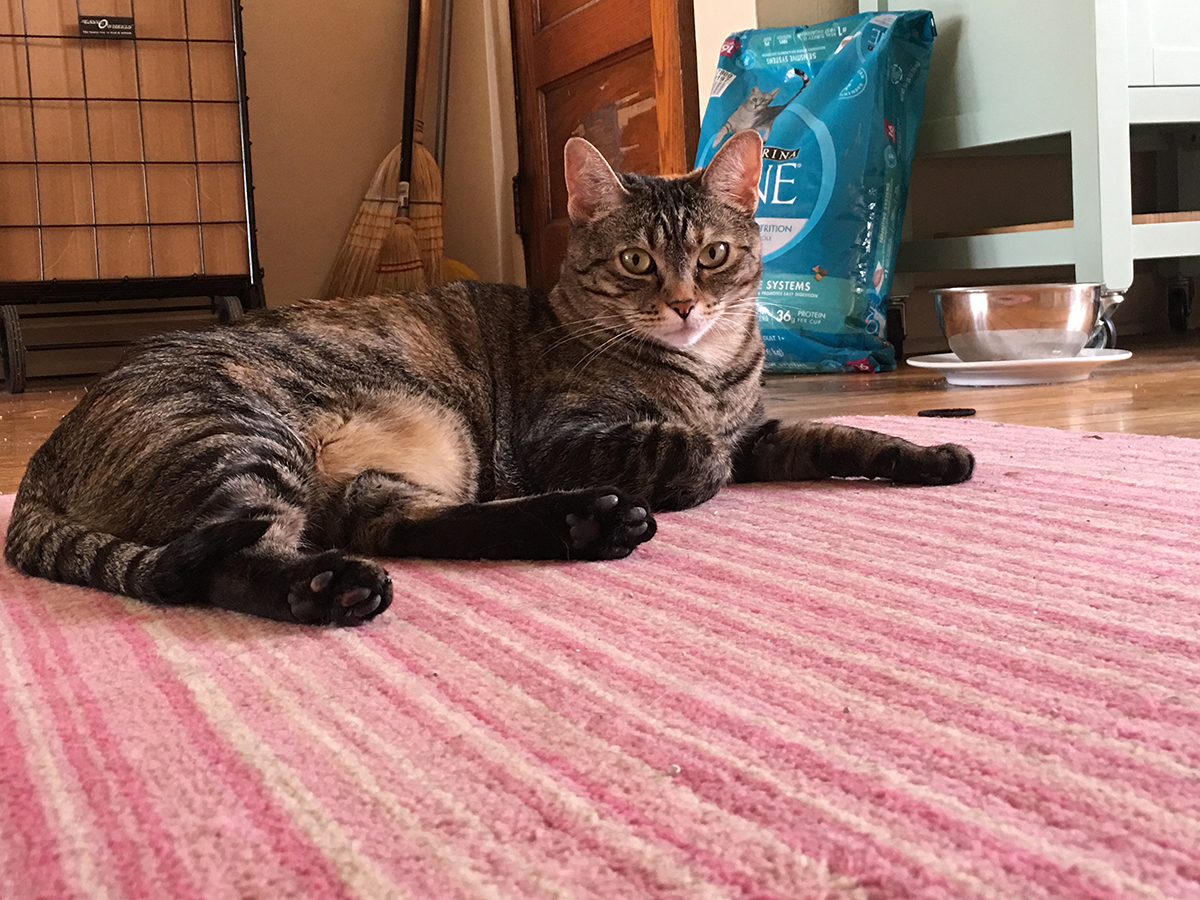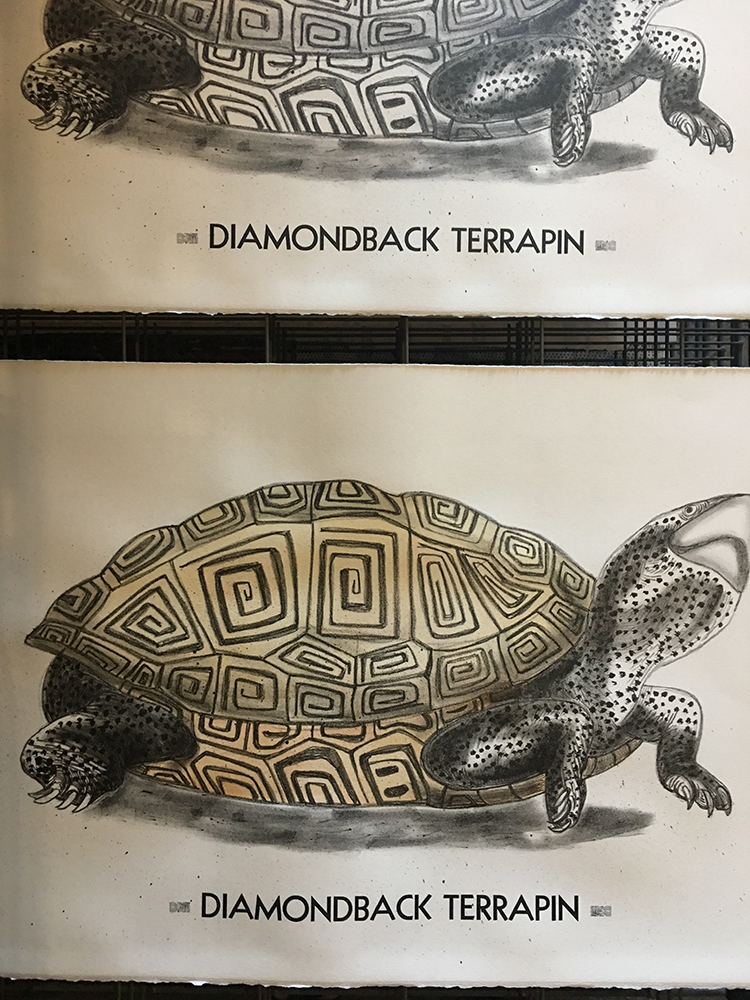Detroit Litho Magic.
Last month I took a week off and went out to visit Lee Marchalonis in Detroit; she moved out there a few years ago to take a position as Printer in Residence at Signal Return, the fabulous public letterpress shop in town. Along the way, she also acquired a litho press and some stones and enough space to house them all in her place (the benefits of leaving NYC in action).

We spent the week setting up her own home litho studio and editioning a print.
I was not a printmaking major in school; there are great big holes in my printmaking knowledge, which I try to fill as I go and/or need to. I had only a dim understanding that litho had something to do with oil and water in some kind of mysterious way. Working with Lee one-on-one and having her explain the process-a multi-step, careful, complicated process – was super helpful in learning how it works. I’m going to explain to the best of my ability below- if there’s glaring errors anywhere please let me know!
We spent some time grading the litho stone first. This is pure physical labor, which erodes the top layer of the stone evenly, to expose fresh stone below. I was a bit awkward at it but luckily Lee knows what’s she’s doing.
Once you grind the limestone down to a pristine surface you’re ready to draw. The advantage for artists using this technique is that you can draw directly on the stone’s surface and pull a print that reflects the quality of all lines, and the tones, that you make. There’s a bunch of different materials that you use to make your marks, all of which contain grease.
Once the drawing is done, the stone is etched for the first time, with a combination of nitric acid and gum arabic, the amount of acid depending on what exact materials you’ve used in different areas of your drawing, which gives you control over the amount the stone is etched. Then you leave it overnight and have a beer.

The next day, you wipe the stone down, clean off the drawing materials, dampen the stone with sponges, and then roll out very stiff ink onto the stone, to reveal the image area. Then there’s some talc and rosin dust rubbed into the stone, then some more gum arabic is buffed into it, then you leave it for a bit.
Later on you get to print. It takes a while to get the density of ink that you want, you generally try to build up an ink surface. And you want to keep the stone wet while you’re working- the water keeps the ink from sticking to the background stone area where the image isn’t. So you go back and forth with dampening the stone with sponges and rolling out the ink. At this point it was helpful that there was two of us- I was on the sponge end of things keeping it all an appropriate level of damp, and Lee managed the inking duties.
Here’s the final print! I added the letterpress text at the bottom at Signal Return; I’m also planning on hand coloring the edition. The Diamondback Terrapin is a gorgeous turtle that is native to salt marshes along the eastern and southern coast, including here in Jamaica Bay-where their numbers are drastically decreasing, unfortunately, for reasons that aren’t clear, but that may be related to the ongoing loss of salt marshes. The turtles spend almost their entire lives in the water, except for when the female Diamondbacks come onto dry land to lay their eggs, so we don’t know very much about their lives and activities. In the early twentieth century, they were almost driven to extinction by hunters harvesting them to be cooked into Turtle Soup; they were considered a delicacy.



